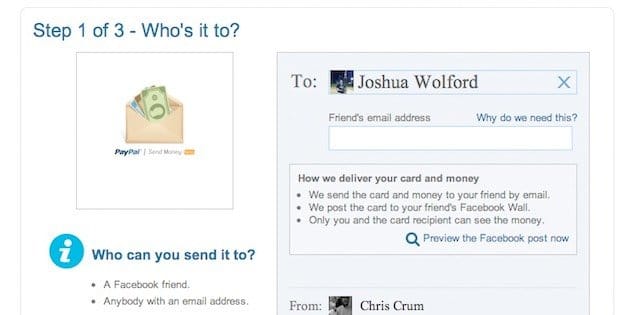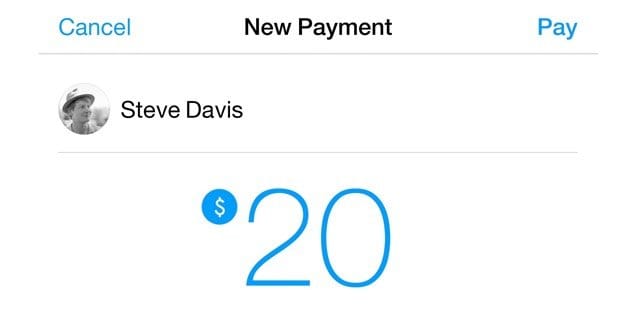 Written by ContentPowered.com
Written by ContentPowered.com
Up until very recently, if you wanted to run an ecommerce store through Facebook, you would have to use a tab app generated by a third party and hosted on their platform. Something like Shopify, for example, lets you create a storefront to run within a Facebook app. The problem is, this is just creating an external website to host your shop, it’s just that the website isn’t accessible from outside the Facebook platform.
Recently, however, Facebook has been making a few changes to try to integrate payments with their system.
It all started a year or so ago, when the company hired on David Marcus, a former Paypal chief. This was quickly leveraged into a way to integrate a payment system into Facebook. Specifically, Facebook is adding “send money to friends” through their messenger app.
This was first leaked a few months ago, when users of an iOS exploration app and developer tool – a user at Stanford, specifically, Andrew Aude – discovered some options in the messenger app.
This month, Facebook made their announcement.
How Send Money Works
The Send Money to Friends is an added button on the bottom of the Facebook Messenger mobile app. It’s a simple and self-explanatory dollar sign. Tap it, and it brings up the send money system. Or, if you’ve set up a numeric pin, it prompts you for the pin before you can access the payments system.
There’s a limit to the system. For now, while it links with your existing Facebook information, you need to plug in a debit card in order to send money to another user. When you receive money, it goes through your linked debit card and into your bank account. It doesn’t get locked into a Facebook Wallet that’s segregated from the rest of your finances.
This system allows users on Facebook to send money back and forth as quickly and easily as sending a text message. Need $10? Have a friend willing to lend you the cash, but unable to do it in person? They can simply plug in the information and send you the cash.
This is a legitimate financial transaction between banks and financial institutions. This means that while the transfer is instantaneous, certain banks may take up to three days to process the payment, which can put a damper on immediate transactions.
The Subtle Details
There are a few interesting quirks of this payment system.
For one thing, it’s linked explicitly with the Facebook messenger. If you’re using the Facebook desktop app or using Facebook via the web, you don’t have access to the payment system.
Second, because it’s linked to the messenger, it’s already given a wide audience. This is simply because Facebook segregated the messaging system from their normal app, so anyone who wants to message anyone via mobile device is forced to use the messenger app.
Third, it’s quite secure. Facebook already has existing infrastructure in place for paying apps, and this security extends to these financial transactions. As for device-side security, you can set up a numeric pin. IOS devices can also use Touch ID. Additionally, there’s always Facebook’s two-step verification to help; it kicks in for this scenario as well.
Fourth, Facebook is getting nothing out of the transaction, monetarily. There’s no transaction fee, so far. However, it’s entirely possible they’ll add one in the coming months, once they’ve proven that people will use it.
Send Money as a Payment Processor
So, will the Send Money to Friends system work as an ecommerce payment system? I don’t think so.
A small business or a hobbyist selling items through Facebook can certainly use it this way. They can add their own debit card to attach an account, and they can accept payment and solicit shipping information through the messenger. However, this is limited. For one thing, your audience needs to be using the mobile messenger; those who aren’t wouldn’t be able to pay. For another, it requires direct Facebook messages and is not quite completely automatic like other payment processing options.
Perhaps the biggest argument against Send Money as a payment system is the scale. Medium and large businesses don’t have the luxury of making a manual bottleneck in their payment processing. They’d much rather use the traditional shopping systems available in Shopify and other app-based storefronts. Heck, even Square and Paypal are more widespread and varied.
The other limitation is the debit card. Send Money doesn’t accept payments from credit cards, for numerous reasons.
Realistically, Send Money is being used as a proof of concept for payment processing and user willingness. Very likely, Facebook will implement a dedicated purchase system, a buy button, to their entire platform. A buy button, with a bit of a commerce platform attached, would give small Facebook-based businesses a better home and a better storefront than some janky solution using sending money through a messenger.
That said, Facebook could be using this system as a way to get a bunch of users to plug in their financial information and link their bank accounts with their Facebook accounts. This way, when Facebook gets around to introducing a more generalized payment system, they’ll already have a wide audience of people ready and able to use the system with a single tap or click.
Money and Messaging
There’s also the possibility that the Send Money system is a success, and other messaging systems take up the call. Other messengers, from WhatsApp to AIM could add payment processors to their systems in the same way Facebook has added it to theirs. Google already allows users to send money from Google Wallet to Google Wallet as attachments on emails, though it’s not strictly the same as using a messenger, as it would if they allowed the same through Google Talk.
It will be interesting to see, over the next few months, how Facebook’s plan works out and what other platforms, applications and companies decide to follow suit.


